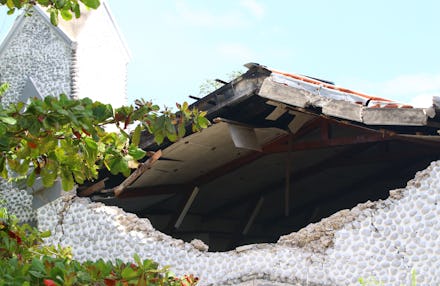The devastation in Haiti may be just beginning

On Saturday morning, a 7.2-magnitude earthquake shook the Caribbean, rattling the ground over a 300-mile radius and producing the longest-lasting tremor ever felt in the region. But no place was more affected by the sudden shift under the Earth's surface than western Haiti, including the city of Les Cayes, just south of the capital city Port-au-Prince. These vulnerable regions, still recovering from a similarly devastating earthquake that struck the region just a decade ago, saw infrastructure crumble, homes and buildings collapse, and daily life come to an abrupt halt as they were suddenly forced into a scramble to save lives.
Trying to identify the amount of destruction or the death toll associated with the latest Haiti earthquake is difficult, as the numbers simply continue to climb. Early reports suggested a few dozen people had been killed in the natural disaster, but that quickly ballooned to several hundred as rescue workers continued to dig through rubble. As of Monday morning, the estimated death toll has climbed past 1,300 people. Nearly 6,000 more people were injured in the earthquake. Even those who managed to escape the harrowing event with their health are still being displaced from their homes, unable to return because the buildings have been damaged or completely destroyed.
Numbers really only ever start to tell the story of this disaster, which has shaken the country to its core. The stories of those who have to live through this disaster, the second "once-in-a-lifetime" event in a decade for Haiti, tell just how destructive, disruptive, and disastrous this earthquake has been. According to The New York Times, there is only one surgeon available near Les Cayes, where the earthquake did the most damage. Dr. Edward Destine has set up a temporary operating room near the airport to help as many people as possible, but he's short on both time and equipment. "I would like to operate on 10 people today, but I just don't have the supplies," he told the Times.
He and a handful of other doctors who have been able to get to the heart of the disaster site have set up makeshift triage sites to help those who are unable to get medical attention elsewhere. Locals have been helping to ferry victims by boat to Port-au-Prince, where doctors and aid workers have been pouring in to provide support.
The hospitals in the region have become overrun by patients in need of medical attention — and those are the ones that have been able to remain operational. Others were destroyed altogether by the quake. This has forced people with even the most serious injuries to be turned away. One woman who spoke to Reuters said that her 71-year-old father suffered two broken legs and her mother also broke a leg when their house collapsed around them — yet they were turned away at their local hospital and instead told to seek treatment in Port-au-Prince, more than 100 miles away.
Making matters worse and threatening to disrupt any aid efforts is the looming threat of tropical storms that are gaining steam in the Atlantic Ocean. Tropical Depression Grace is expected to pour several inches of rain on Haiti as soon as Tuesday, which could lead to mudslides and make it difficult for aid workers to reach those in need of help.
The toll that these natural disasters take on Haitians and others that experience them is brutal. It can't be measured in lives lost or buildings destroyed. These are traumatic, life-altering events for the victims, the rescue workers, and everyone affected. And sadly, the worst may still be yet to come.